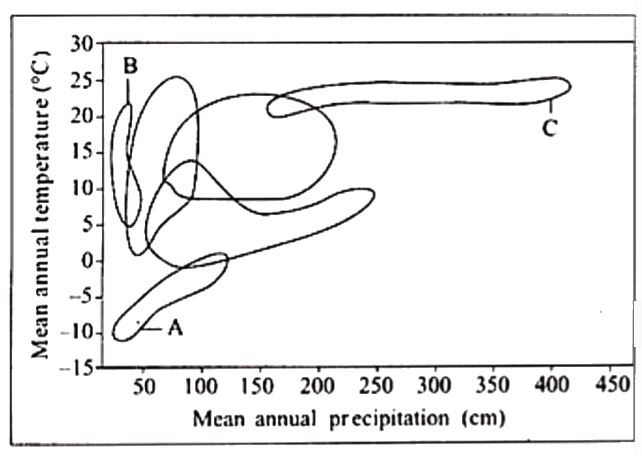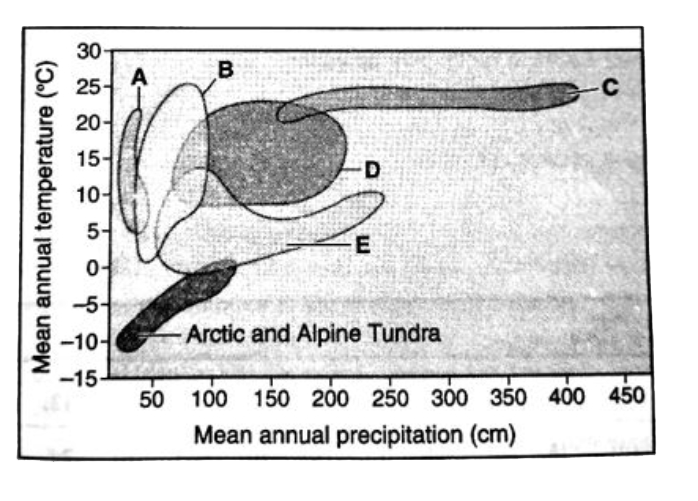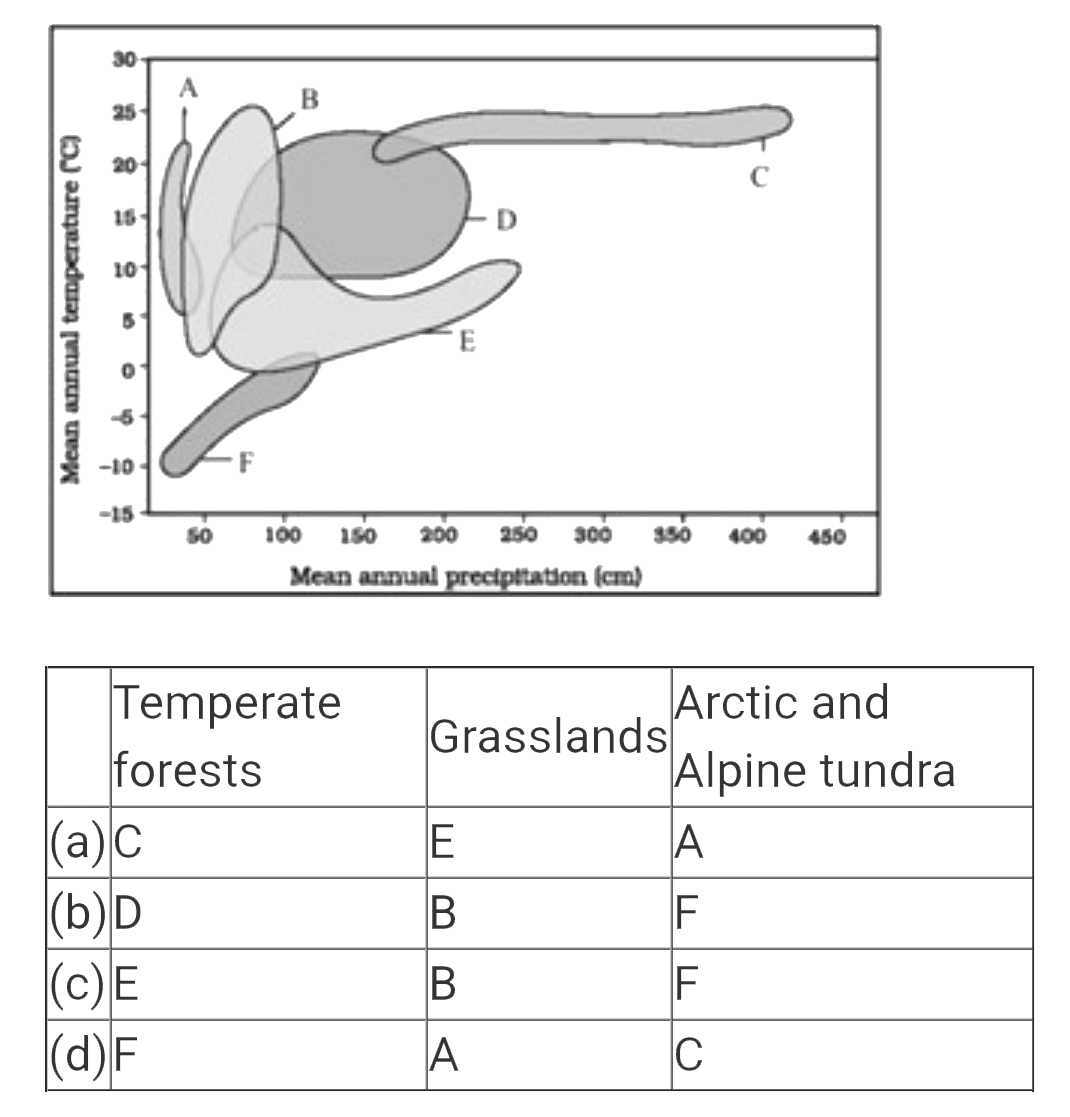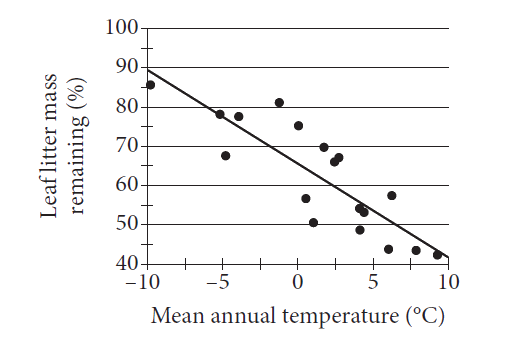Formation of tropical forests needs mean annual temperature and mean annual precipitation as
The correct Answer is:A
To answer the question about the formation of tropical forests in relation to mean annual temperature and mean annual precipitation, we can break it down into the following steps:
1. Understanding Ecosystems:
- Tropical forests are a type of ecosystem that consists of both biotic (living organisms) and abiotic (non-living elements) factors.
2. Identifying Abiotic Factors:
- The abiotic factors that influence the formation of tropical forests include temperature and precipitation.
3. Mean Annual Temperature:
- For tropical forests to thrive, the mean annual temperature must be within a specific range.
- The ideal temperature range for the formation of tropical forests is between 18°C to 25°C.
4. Mean Annual Precipitation:
- In addition to temperature, the amount of rainfall is crucial for the growth of tropical forests.
- The mean annual precipitation required for tropical forests is typically between 150 cm to 400 cm.
5. Conclusion:
- Therefore, the formation of tropical forests requires a mean annual temperature of 18°C to 25°C and mean annual precipitation of 150 cm to 400 cm.
Final Answer:
The formation of tropical forests needs a mean annual temperature of 18°C to 25°C and mean annual precipitation of 150 cm to 400 cm.
---
- Tropical forests are a type of ecosystem that consists of both biotic (living organisms) and abiotic (non-living elements) factors.
- The abiotic factors that influence the formation of tropical forests include temperature and precipitation.
- For tropical forests to thrive, the mean annual temperature must be within a specific range.
- The ideal temperature range for the formation of tropical forests is between 18°C to 25°C.
- In addition to temperature, the amount of rainfall is crucial for the growth of tropical forests.
- The mean annual precipitation required for tropical forests is typically between 150 cm to 400 cm.
- Therefore, the formation of tropical forests requires a mean annual temperature of 18°C to 25°C and mean annual precipitation of 150 cm to 400 cm.
The formation of tropical forests needs a mean annual temperature of 18°C to 25°C and mean annual precipitation of 150 cm to 400 cm.
Topper's Solved these Questions
- BOOK - NCERT EXEMPLAR ENGLISHCHAPTER - ORGANISMS AND POPULATIONSEXERCISE - vary Short Answer Type Questions19videos
ORGANISMS AND POPULATIONS
- BOOK - NCERT EXEMPLAR ENGLISHCHAPTER - ORGANISMS AND POPULATIONSEXERCISE - Short Answer Type Questions17videos
ORGANISMS AND POPULATIONS
- BOOK - NCERT EXEMPLAR ENGLISHCHAPTER - MOLECULAR BASIS INHERITANCE EXERCISE - Long Answer Type Questions9videos
MOLECULAR BASIS INHERITANCE
- BOOK - NCERT EXEMPLAR ENGLISHCHAPTER - PRINCIPLE OF INHERITANCE AND VARIATIONS EXERCISE - LONG ANSWER TYPE QUESTIONS5videos
PRINCIPLE OF INHERITANCE AND VARIATIONS
Similar Questions
Knowledge Check
- Question 1 - Select One
Seasonal and annual precipitation affects the of water.
AFlowBAvailabilityCpH valueDQuality
The graph given below is showing biome distribution with respect to annual temperature and precipitation. Identify A, B and C, respectively.
 View Solution
View SolutionBiome distribution with respect to annual temperature and precipitation is given below. Identify grassland and coniferous forest by selecting the CORRECT option .
 View Solution
View SolutionIn the given diagram , Biome distribution is shown with respect to annual temperatrue and precipitation. Select the correct option.
 View Solution
View SolutionThe biome in which the mean annual temperature is approximately between 20∘Cand25∘C and the mean annual precipitation is approximately between 150 cm to 450 cm is
View SolutionAssertion:- Distinct seasons and annual variation in precipitation leads to formation of major biomes.
Reason:- Distinct seasons and annual variation in precipitation leads to development of different climatic conditions which favours growth and development differentially.View SolutionThe figure below shows the relationship between the percent of leaf litter mass remaining after decomposing for 3 years and the mean annual temperature, in degrees Celsius (.∘C), in 18 forests in Canada. A line of best fit is also shown.

A particular forest in Canada, whose data is not included in the figure, had a mean annual temperature of −2∘C. Based on the line of best fit, which of the following is closest to the predicted percent of leaf litter mass remaining in this particular forest after decomposing for 3 years?View Solution"Tropic hormones"Means
View Solution

